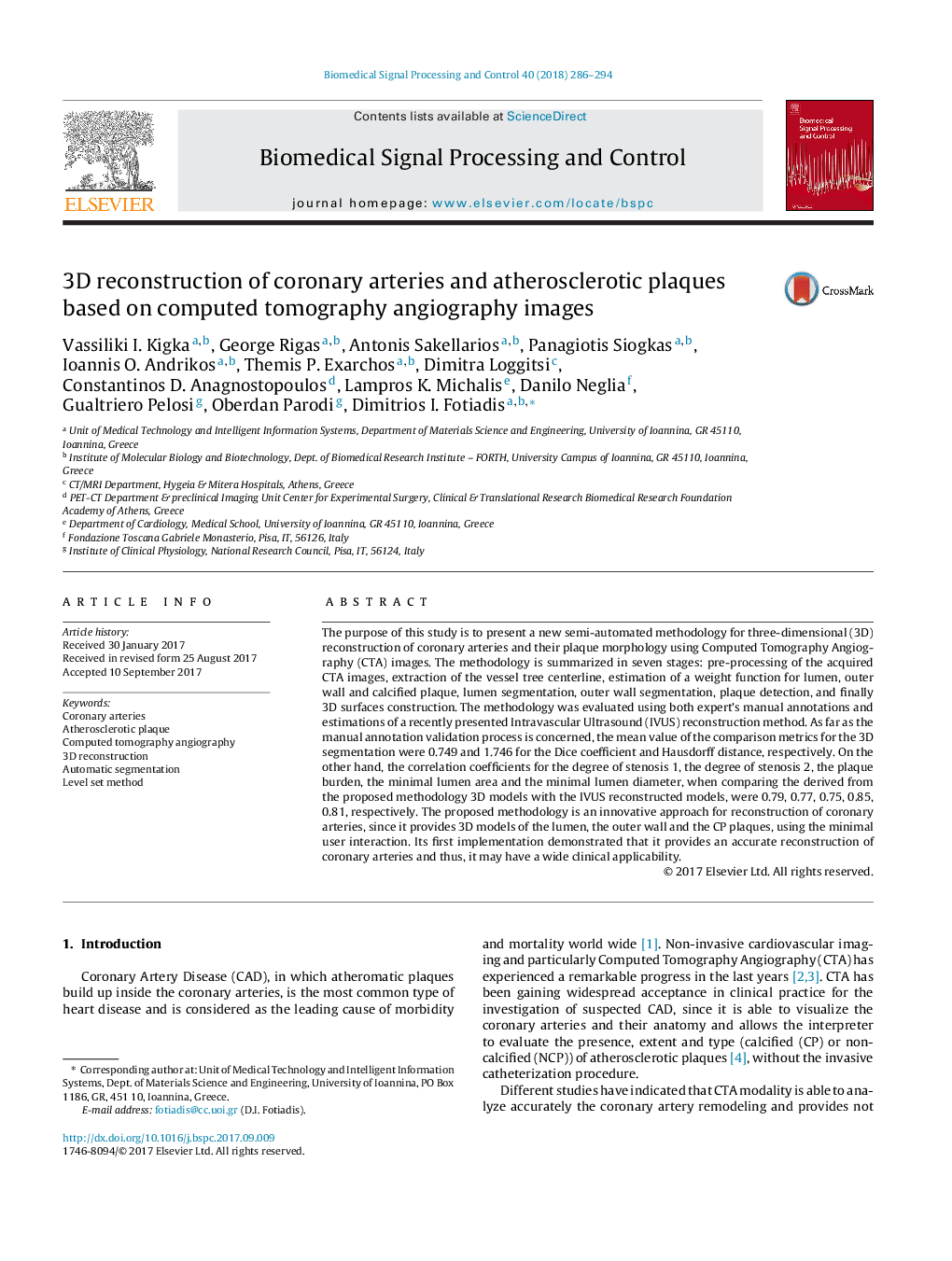| Article ID | Journal | Published Year | Pages | File Type |
|---|---|---|---|---|
| 6950983 | Biomedical Signal Processing and Control | 2018 | 9 Pages |
Abstract
The purpose of this study is to present a new semi-automated methodology for three-dimensional (3D) reconstruction of coronary arteries and their plaque morphology using Computed Tomography Angiography (CTA) images. The methodology is summarized in seven stages: pre-processing of the acquired CTA images, extraction of the vessel tree centerline, estimation of a weight function for lumen, outer wall and calcified plaque, lumen segmentation, outer wall segmentation, plaque detection, and finally 3D surfaces construction. The methodology was evaluated using both expert's manual annotations and estimations of a recently presented Intravascular Ultrasound (IVUS) reconstruction method. As far as the manual annotation validation process is concerned, the mean value of the comparison metrics for the 3D segmentation were 0.749 and 1.746 for the Dice coefficient and Hausdorff distance, respectively. On the other hand, the correlation coefficients for the degree of stenosis 1, the degree of stenosis 2, the plaque burden, the minimal lumen area and the minimal lumen diameter, when comparing the derived from the proposed methodology 3D models with the IVUS reconstructed models, were 0.79, 0.77, 0.75, 0.85, 0.81, respectively. The proposed methodology is an innovative approach for reconstruction of coronary arteries, since it provides 3D models of the lumen, the outer wall and the CP plaques, using the minimal user interaction. Its first implementation demonstrated that it provides an accurate reconstruction of coronary arteries and thus, it may have a wide clinical applicability.
Keywords
Related Topics
Physical Sciences and Engineering
Computer Science
Signal Processing
Authors
Vassiliki I. Kigka, George Rigas, Antonis Sakellarios, Panagiotis Siogkas, Ioannis O. Andrikos, Themis P. Exarchos, Dimitra Loggitsi, Constantinos D. Anagnostopoulos, Lampros K. Michalis, Danilo Neglia, Gualtriero Pelosi, Oberdan Parodi,
